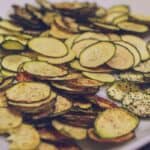The dangers associated with non-stick pans have been so widely reported over the years. While many brands tried to change people’s perceptions by incorporating nontoxic materials and adapting different techniques.
It did, however, not change the reality on a larger scale. Not everyone can afford the high-quality nonstick pans that are completely safe and non-hazardous. We also have compiled a guide that will help you choose the highly rated nonstick pans, if you are looking for the best one.
If you are one of those seeking alternatives to nonstick pans, then this article will interest you as we have discovered some of the best alternatives to nonstick pans that you might find useful.
Alternatives to Nonstick Cookware
There are numerous reasons why non stick pans are popular and commonly found in every household since the slick non stick coating provides effortless food release with less oil, and cleaning them is also a breeze. The same special coating that has made our lives easier has always been so controversial in terms of health concerns.
While nobody wants to risk their health, the truth is that many people don’t know about the alternatives to non stick cookware, or if they do, they aren’t convinced that there are cookwares that can replace non stick.
Stainless steel, ceramic, and cast iron are the three most common alternatives to nonstick cookware. There are many nonstick pots and pans available, though not all of them claim or adhere to the same qualities as Teflon-coated pots or pans. A little effort and patience, however, will help you find the best nonstick frying pan alternative.
Cookware Made of Ceramic
Ceramic cookware is made from organic materials, making it the safest nonstick pan replacement at this point. In addition to its technical features, Ceramic cookware is also notable for its attractive appearance.
As compared to other cookware, ceramic cookware is relatively light in weight. Ceramic pots and pans with non-stick properties are usually enameled and come in a variety of beautiful colors.
Ceramic cookware’s natural non-stick properties are not considered long-lasting, lasting approximately 3 to 5 years. In most cases, ceramic cookware is made of different layers of metal; therefore, it is recommended to read the product description before purchasing since different metals have different heat retention and distribution properties.
Cookware Made of Stainless Steel
The fact that stainless steel cookware is extremely durable and can withstand high cooking temperatures cannot be denied. Many people are worried that using stainless steel cookware may cause their food to burn or stick, but the truth is that if you invest in premium quality uncoated stainless steel pans, you will get better performance.
Nevertheless, you need the right amount of oil or butter to perfectly sear, brown, or fry your food. Stainless steel pots and pans are generally dishwasher and oven safe. We recommend hand washing them, as they might lose their shiny, elegant look if they are washed with a machine.
Cookware Made of Cast Iron
The heavy-duty quality of cast iron makes it an excellent cookware for retaining heat. Cast iron pans perform well as a substitute for nonstick pans when seasoned properly.
Cast iron pots and pans are considered more cost-effective than nonstick cookware. The best thing about this cookware is that it can be easily repaired if it gets damaged or scratched. Acidic foods should not be cooked in Cast iron cookware as they may absorb the iron into the food and your meal will taste like iron. Cast iron cookware is oven safe.
One-on-one Comparison of Non-stick Pans
Non Stick Pan vs Stainless Steel Pan
A nonstick pan is a convenient option for cooking delicate foods such as eggs, pancakes, fish, and more. In contrast to Teflon, there are two non-stick coatings available, the first is PFOA-free and the second is PFOA-free.
You can also use the stainless steel pan as a good alternative to non-stick frying pans if you use it correctly. Before adding food to your stainless steel pan, pre-heat it with oil or butter to prevent food from sticking or burning.
Upon overheating, nonstick pans begin to break down toxic chemicals, which may release hazardous chemicals into the air that can cause severe health issues.
Stainless steel pans, however, are more durable and offer toxic free cooking as they can withstand high temperatures, allowing you to sear and brown your food with a thick, brown crust. Stainless steel pans do not require as much care as nonstick pans.
Nonstick pans can be oven-safe depending on their build and heat retention capabilities. Before putting a non stick pan into the oven, check the manual because some thin coated pans can easily chip. Due to its durability and ability to retain extremely high temperatures, stainless steel is an excellent choice for use in the oven.
Stainless steel pans may compromise the quality of your food only when they are exposed to acidic foods. If not, you can throw your stainless steel pan in the dishwasher without thinking twice. No matter what the manufacturer claims about dishwasher-safe nonstick pans, a gentle hand wash is always recommended. The dishwashing process causes the nonstick finish to flake over time.
To conclude, nonstick pans vs stainless steel pans both have their merits and disadvantages. However, we found no major drawback with stainless steel pans other than they don’t offer such an effortless release of food as nonstick pans do. Cleaning them also requires a lot of effort. Upon heating, they discolor easily and leave nasty brown stains.
The non-stick pans tend to chip off easily and require delicate handling when it comes to cooking and cleaning.
Non Stick Pan vs Cast Iron
Commercially made nonstick pots and pans replaced cast iron as the only nonstick cookware known before the 20th century. Cast iron and nonstick pans often perform similarly, but that doesn’t mean they can be easily switched or replaced.
The majority of chefs and cooks prefer cast iron pans because of their exceptional nonstick performance and variety of cooking techniques.
It is best to pre-heat cast iron skillets with the cooking oil to high temperatures before using them without worrying about the chemicals leaching into the food.
The non stick pans, however, do not offer this benefit as their low heat resistance makes the non stick coating break down or seep toxic ingredients into the food.
If we compare a non stick pan with a cast iron pan, a non stick pan is not a good heat conductor because of its non stick coating. A cast iron pan, on the other hand, conducts heat well and is ideal for searing or deep-frying, which results in a richly colored dish and fantastic flavor.
Comparatively to non-stick pans, you can always put your cast iron pan in the oven without worrying about any damage. Due to the fact that not all non-stick pans are oven safe, they are generally not designed for baking at high temperatures.
When discussing non stick vs cast iron, the goal is to compare their non stick features, keeping in mind which cookware is the safest. While cast iron pans are relatively inexpensive and known for their longevity, non stick pans need to be replaced after every 2 to 3 years even after carefully maintaining them.
One of the drawbacks we found with cast iron skillets is that they react with acidic foods and fish. Keep your cast-iron pan well-seasoned for a great nonstick performance by drying it after washing.
Non Stick Pan vs Ceramic Pan
Before getting into the debate of non stick vs ceramic pans let’s clarify one thing. Ceramic cookware is the safest cookware when compared to non stick, stainless steel, and cast iron. Ceramic pans serve much longer than non-stick pans due to their lighter weight.
Despite the difference in heat retention between nonstick pans and ceramic skillets, we should not overlook the fact that ceramic skillets are exceptional at retaining heat.
Ceramic cookware has good heat resistance, but not all ceramic cookware can be used in the oven, just like nonstick cookware. Ceramic pans cannot hold heat above 350 degrees. In terms of even heat distribution, ceramic pans are inefficient.
Although most ceramic pans are dishwasher safe, it is recommended to consult the manual of your cookware as frequent dishwashing may compromise the beautiful glazed look of your ceramic pan. The same applies to nonstick pans. You should hand wash your cookware.
Both ceramic and nonstick pans are sensitive to metal utensils, so using them with such gears may result in quicker wear.
Was this helpful?
Hi there! I’m a food enthusiast and journalist, and I have a real passion for food that goes beyond the kitchen. I love my dream job and I’m lucky enough to be able to share my knowledge with readers of several large media outlets. My specialty is writing engaging food-related content, and I take pride in being able to connect with my audience. I’m known for my creativity in the kitchen, and I’m confident that I can be the perfect guide for anyone looking to take their culinary journey to the next level.








